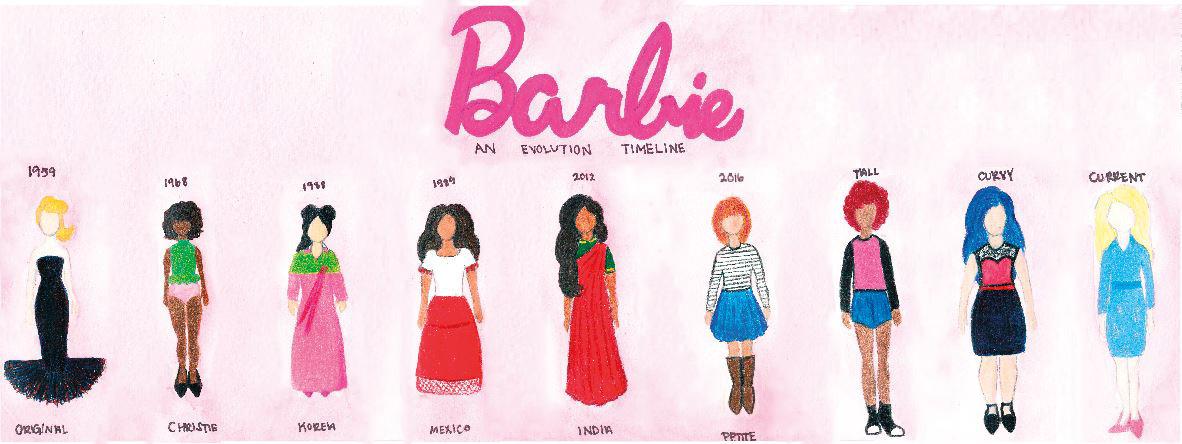Breaking Barbie Boundaries
Mattel Inc. brings body type diversity to dolls after 57 years of production
Being sold in major retail outlets such as Target and Walmart, the new line of Barbies are approximately $10 each.
Blonde hair, blue eyes and a tiny waist are the characteristics of the world’s most famous “It Girl,” Barbie. Since her debut in the late 1950s, Barbie has remained a household name for children in over 150 countries. Today, after almost 57 years later, Barbie is finally getting a long overdue makeover.
The doll has faced much scrutiny since its launch for the unrealistic beauty standards it has set for young girls. Since 2012, Barbie sales have dropped four percent every year. In an effort to diversify Barbie and boost production sales, Mattel Inc. has reintroduced Barbie with three new body types, tall, curvy and petite, seven skin tones, 22 eye colors and 24 hairstyles. The glory of the new Barbie lies in her inclusivity. Young girls will no longer feel inferior to a doll that is impossible to look like. The new doll gives girls the chance to see their body, hair and skin colors represented by one of the most prominent and popular toy brands in the world.
Mattel Inc. has pushed the project forward to appeal to children and parents who have grown tired of the one size fits all doll. Though she may be made of plastic, Barbie continues to uphold a skewed sense of beauty. Internet and television constantly try to force-feed their ideals of beauty onto society, causing many young girls to have body image issues. These young and impressionable minds have already faced so much scrutiny throughout their lives. They do not need a toy demeaning them as well.
In addition to Barbie’s new body, Mattel, Inc. has also introduced the “You Can Be Anything” Barbie line, which features various underrepresented career fields, such as a game developer, film director, architect and computer engineer. This innovative collection of toys portrays more realistic and rigorous career paths that stray from the traditional princess and fashion model. It is important for girls to know that their dreams are not limited by their gender. The “You Can Be Anything” Barbie excellently portrays this idea.
Despite Barbie’s many progressive changes, there are still some people who believe that Barbie should not have to change her classic look and that there is no real harm in the doll’s unrealistic dimensions. It may seem silly that an 11 inch piece of plastic can be so influential, but because of Barbie’s status as a pop culture icon, it is near impossible to not fall under her spell. Girls all over the world have been playing with the same paper thin, blonde hair and blue-eyed doll since the 60s, and it is a bit unsettling. Not all girls have the doll’s signature look, and no girl should feel pressured to have it. All girls should have the opportunity to see themselves represented in the material world.
Barbie can be a critical component in a young girl’s life, and it is important for the creators of Barbie to produce a doll that is just as smart, beautiful and diverse as the children playing with her. The world is changing, and it is about time Barbie caught up.










